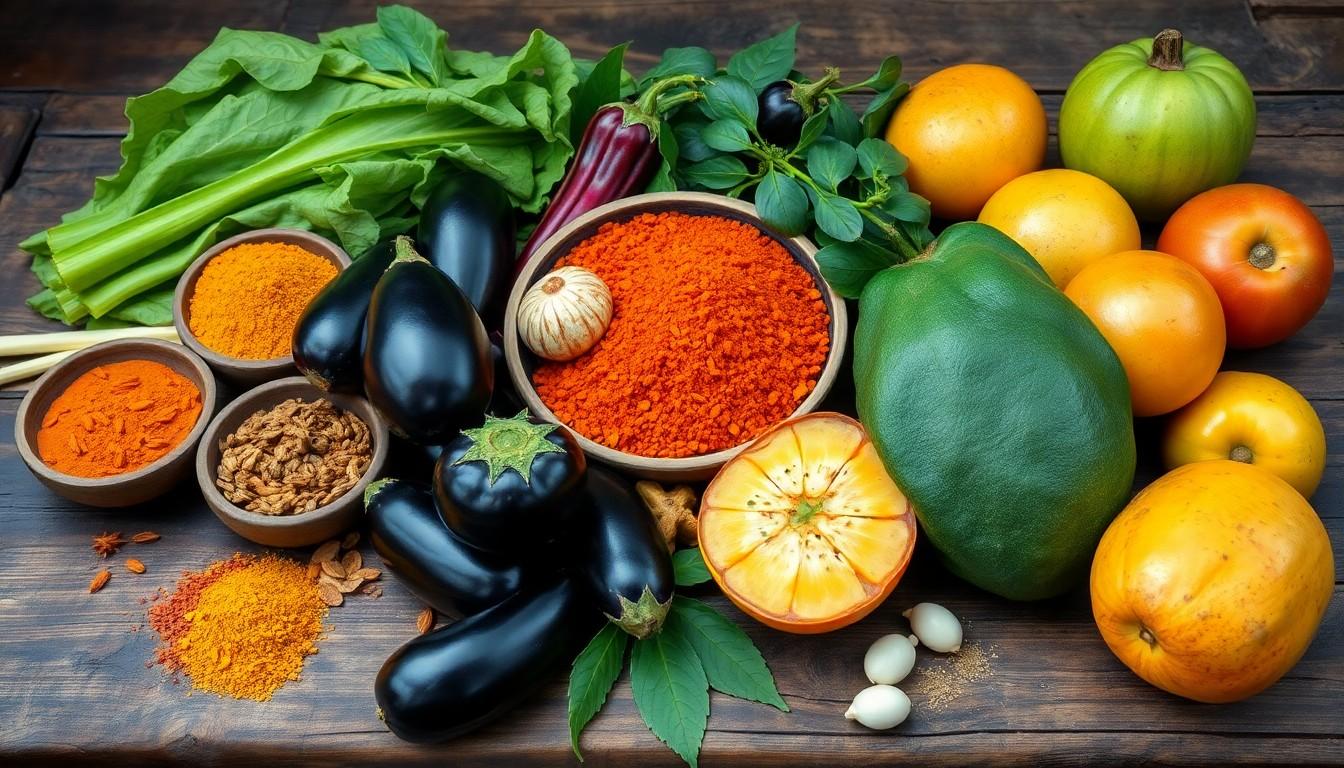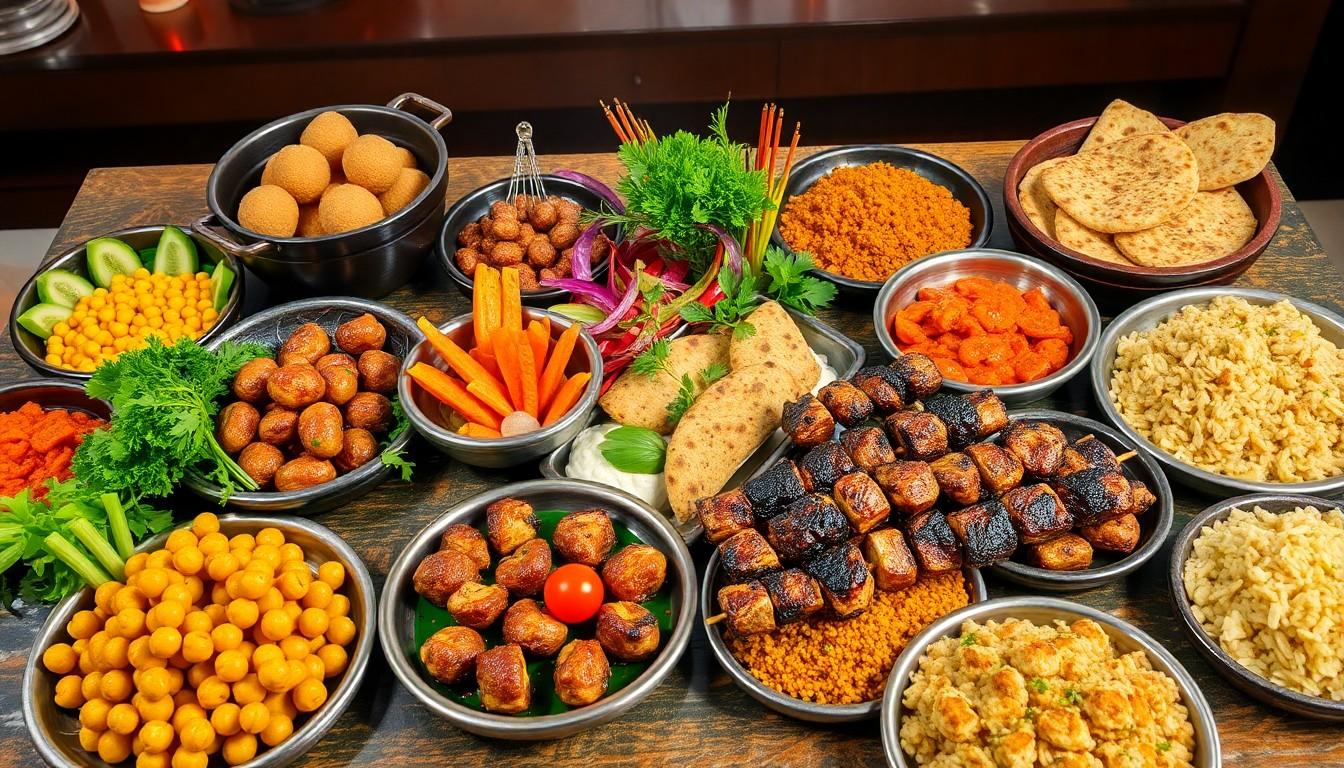When it comes to culinary adventures, Jazamui food is like a treasure chest waiting to be opened. Imagine a world where spices tango with flavors and every bite tells a story. This vibrant cuisine isn’t just a meal; it’s an experience that tickles the taste buds and warms the soul.
Overview of Jazamui Food
Jazamui food showcases a vibrant blend of flavors and colors. This cuisine highlights an array of spices that contribute to its depth and uniqueness. Diners often experience a sensory explosion with each bite, as the aromas fill the air and entice the palate. Traditional dishes frequently incorporate ingredients like fresh herbs, marinated meats, and local vegetables, all working in harmony to create satisfying meals.
Notable staples in Jazamui cuisine include savory rice dishes, rich stews, and grilled skewers. People enjoy the communal aspect of sharing these meals, as it fosters connection among diners. Each dish emphasizes local ingredients, which showcase the region’s agricultural bounty. Scents from spices like cumin, coriander, and turmeric resonate within every culinary creation.
In addition to flavor, Jazamui food focuses on presentation. Eye-catching arrangements delight the senses, making each meal an experience rather than just sustenance. Various cooking methods, such as grilling and slow-cooking, enhance the textures found in dishes. Individuals can savor the crispiness of fried snacks alongside the tenderness of slow-cooked meats.
Seasonal festivals often feature Jazamui food, celebrating not only its taste but also its cultural significance. Rituals surrounding food bring people together, creating bonds that span generations. Visitors to the region will find that each meal encapsulates the essence of Jazamui heritage, offering a taste of tradition that transcends time.
Unique Ingredients in Jazamui Cuisine

Jazamui cuisine features a variety of distinctive ingredients that contribute to its rich flavors. Unique components work together to create unforgettable meals that capture traditional essence.
Spices and Their Role
Spices form the backbone of Jazamui cuisine. Turmeric adds a warm, golden hue while balancing other flavors. Cumin enhances savory dishes with nutty undertones. Coriander provides a refreshing twist, complementing the heat of chili peppers. Each spice plays a specific role, ensuring dishes are well-rounded and aromatic. These spices enhance not just flavor but also the overall dining experience, creating a harmonious blend that evokes the region’s cultural history.
Local Produce and Specialties
Local produce significantly shapes Jazamui dishes. Fresh vegetables, such as eggplants and leafy greens, grace many plates. Specialty fruits, like mangoes and guavas, infuse sweetness into both savory and sweet recipes. Additionally, unique grains, such as millet and sorghum, serve as staples. Each ingredient is sourced from nearby markets, ensuring freshness and fostering a strong connection to the land. This reliance on local produce highlights seasonal availability, further enriching the culinary landscape.
Popular Dishes to Try
Jazamui cuisine features a variety of enticing dishes worth exploring, each highlighting unique flavors and traditions.
Signature Appetizers
Indulging in appetizers sets the tone for the Jazamui dining experience. Spiced chickpea fritters offer a crispy texture paired with vibrant chutneys. Grilled flatbreads served with a selection of dips provide a warm welcome. Fresh vegetable salads coated in tangy dressings add a refreshing contrast. Savory pastries stuffed with spiced potatoes delight the palate. Each appetizer showcases the region’s rich culinary heritage, inviting diners to savor every bite.
Main Courses Worth Sampling
Main courses present a highlight of Jazamui culinary art. Aromatic rice dishes cooked with fragrant spices serve as a centerpiece. Grilled skewers feature marinated meats charred to perfection, delivering layers of flavor. Hearty stews rich with local vegetables create a comforting and satisfying meal. Vegetarian options, including lentil-based dishes, impress with their depth and fullness. Each main course transforms dining into a memorable feast, reflecting the essence of Jazamui food culture.
Cultural Significance of Jazamui Food
Jazamui food embodies deep-rooted cultural traditions and social connections. Celebrations and gatherings often center around communal meals, fostering unity and strengthening bonds among family and friends. Cultural festivals showcase culinary heritage, where dishes reflect diverse historical influences and local ingredients.
Food serves as a storytelling medium in Jazamui culture. Each dish represents unique regional narratives, passed down through generations. Traditional recipes often incorporate methods and ingredients that echo the lives of ancestors, connecting individuals to their cultural identity. Eating together enhances this experience, promoting shared traditions and values.
Seasonal availability of ingredients plays a vital role in the cuisine. Locally sourced produce not only boosts freshness but also reflects the rhythm of local life. Additionally, the focus on sustainability promotes a profound respect for the environment, ensuring that culinary practices support the community.
Celebrations like harvest festivals highlight the importance of specific ingredients. Dishes prepared during these events showcase the pinnacle of Jazamui culinary art, often featuring vibrant colors and intricate flavors. Spices resonate as cultural symbols, enriching dishes and embodying stories that spice up communal experiences.
Food preparations also invite participation from individuals of all ages. Cooking together becomes an educational opportunity, imparting knowledge of traditional techniques and fostering pride in cultural heritage. Jazamui food carries significance beyond nutrition; it nurtures identities, relationships, and traditions that define community life.
Tips for Enjoying Jazamui Cuisine
Exploring Jazamui cuisine involves engagement with flavors and textures. Savor each dish slowly to fully appreciate the complex taste profiles. Pairing dishes with traditional drinks enhances the overall experience. Share meals with others, fostering connection and enhancing enjoyment. Consider trying new flavors, as each dish offers a unique story rooted in culture.
Taste the spices that define Jazamui food. Take note of the aromatic herbs and their impact on dishes. Using fresh ingredients elevates the flavors significantly. Visiting local markets can provide the best selection of seasonal produce. Opt for communal dining experiences, emphasizing social bonding over shared dishes.
Appetizers, such as spiced chickpea fritters, set the perfect stage. Main courses should include prominent choices like grilled skewers or hearty vegetable stews. Exploring vegetarian options, such as lentil-based meals, caters to diverse dietary preferences. Finish with a signature dessert to experience the culinary journey fully.
Learning about traditional cooking methods enhances appreciation for the cuisine. Engaging with local chefs offers insight into the preparation of dishes. Discovering the cultural significance behind seasonal festivals adds depth to the dining experience. Remember, enjoying Jazamui cuisine is about more than just the food; it’s about embracing the stories and traditions that shape its vibrant identity.
Conclusion
Jazamui food offers an unforgettable culinary journey filled with vibrant flavors and rich traditions. Each dish serves as a bridge connecting past and present, inviting diners to experience the cultural narratives that shape this unique cuisine. The emphasis on communal dining fosters connections among friends and family, making every meal a celebration of togetherness.
By savoring the diverse ingredients and engaging with local customs, diners can fully appreciate the depth of Jazamui culinary art. Exploring this cuisine not only tantalizes the taste buds but also nurtures a deeper understanding of its cultural significance, ensuring that every bite tells a story worth sharing.

